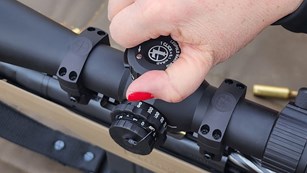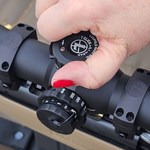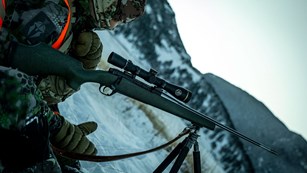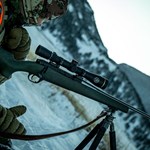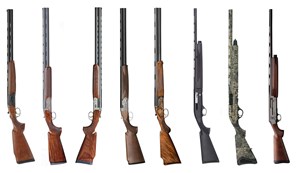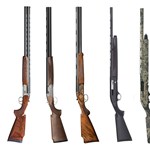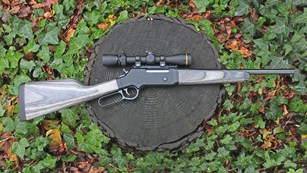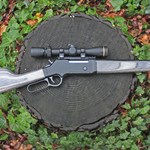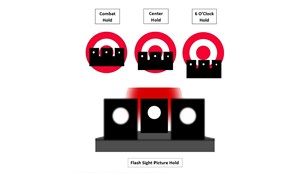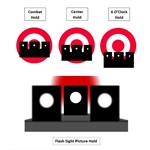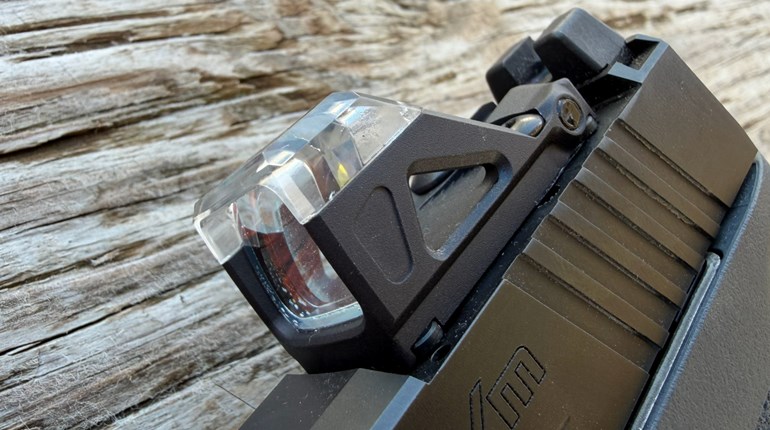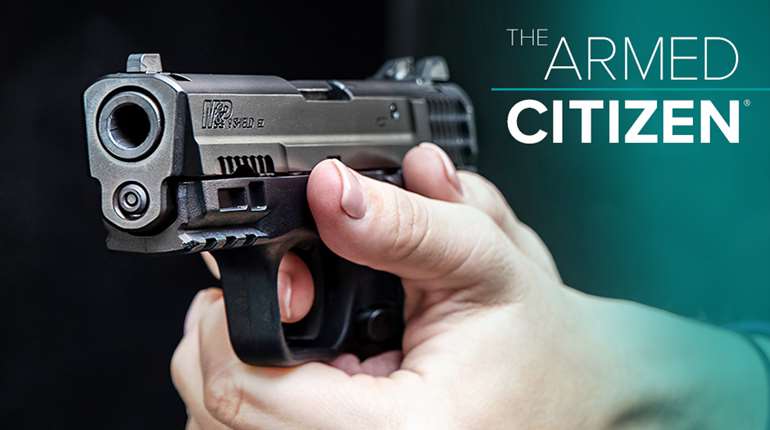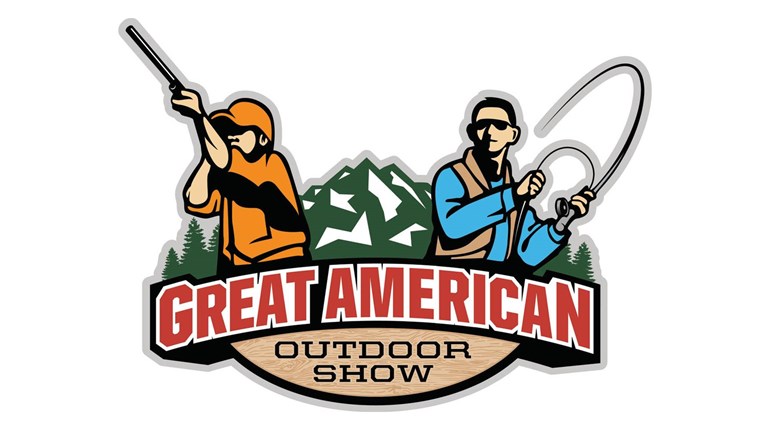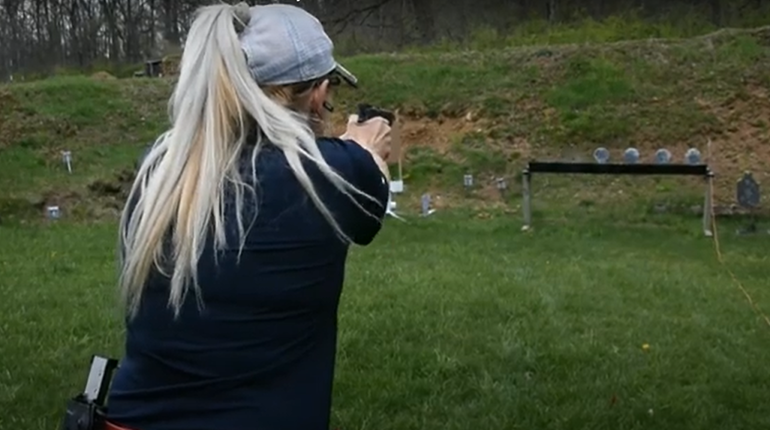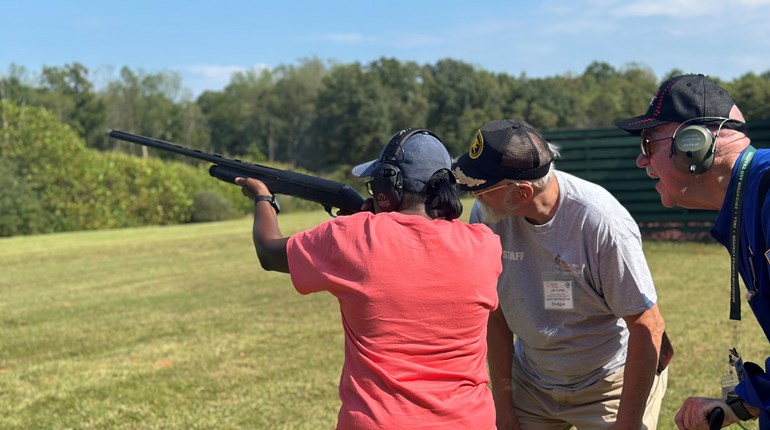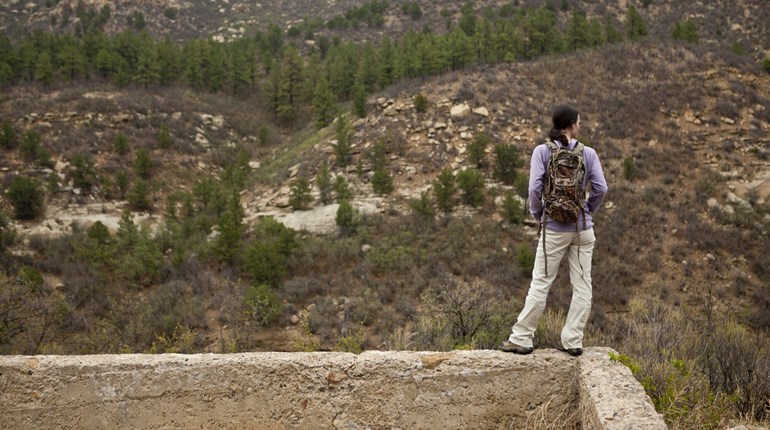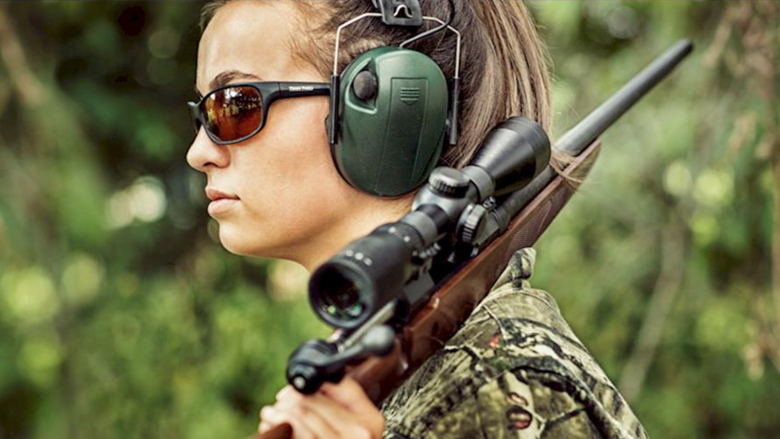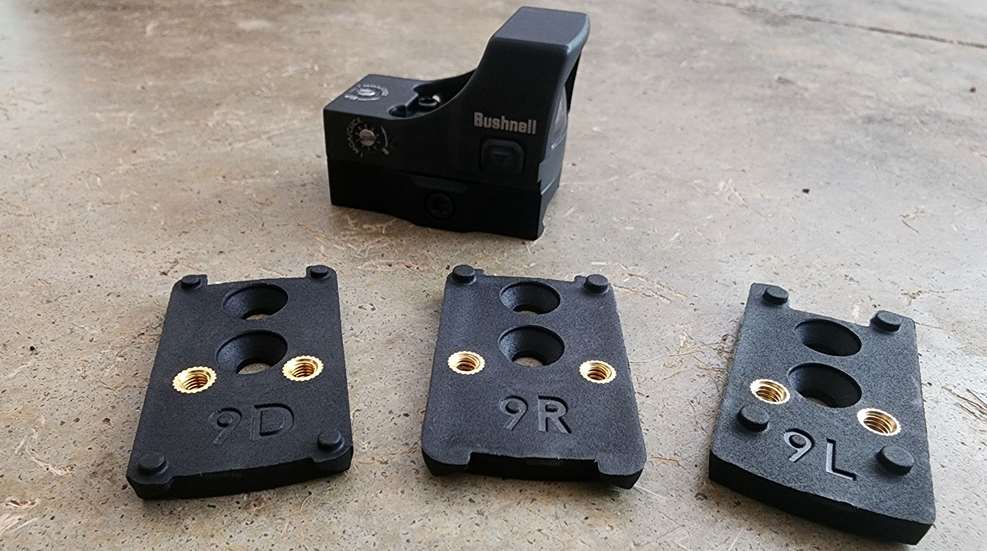
If you’ve ever shopped for a red-dot optic to put on your pistol, rifle or shotgun, you’ve quickly figured out that mounting a red-dot onto a firearm isn’t as simple as mounting, say, a riflescope. That’s because each optic has its own footprint, or mounting system, and they’re not all compatible with all optics-ready guns.
What’s a footprint? Simply put, it’s got to do with the size and shape of the mounting system that a given optic uses to affix it to the gun. Footprints are made up of a specific number and orientation of screw holes and alignment pins or socket holes. The footprint of the optic has to match the footprint on the slide or receiver of the gun—if it doesn’t, you’ll need to use an adapter plate that allows the two to work together. Sometimes that’s no problem, but sometimes an adapter plate is hard to find, not to mention that plates can raise the height of the optic, which might affect comfort or accuracy. For that reason, you might find it preferable to buy an optic that matches your gun’s footprint to simplify the mounting process.
So how do you know what to buy? If you’ve got a gun that’s optics-ready, the manual (or a quick Google search) will tell you what footprint it uses. Then you can shop for optics that match that footprint. Many optics-ready guns come with multiple adapter plates or with your choice of one adapter plate, with some sold separately. These are the footprints you’re likely to run into.

RMR footprint
RMR
Trijicon’s RMR optic popularized this footprint, and many other brands use it now. It uses two screw holes and two front recoil lugs, and it’s probably the most common footprint on the market. Popular optics that use this footprint, aside from the original Trijicon RMR, include the Trijicon SRA, Holosun 507C, Holosun 407C, Holosun 508T, Swampfox Kingslayer, Swampfox Justice, Riton X3 Tactix PRD, Sig Sauer Romeo Zero-R, Sightmark Mini Shot M-Spec M2 Solar, Primary Arms Classic Series Mini Reflex Sight and more.

RMS/RMSc footprint
RMSc
This footprint pattern has two screw holes and four recoil sockets, one in each corner. It is relatively small and commonly used for micro optics. Optics that use the RMSc footprint include the Vortex Defender CCW, Swampfox Sentinel, Swampfox Sentinel, Sig Sauer Romeo Zero Elite, Primary Arms Classic Series 21mm Micro Reflex Sight, Sightmark Mini Shot A-Spec M3 Micro and many Shield Sights products.
There is a larger version of the RMSc called the RMS or the Sheild RMS, used on some Shield Sights products and others.
Leupold DeltaPoint Pro
The DeltaPoint Pro footprint looks almost exactly like the RMS (the full-sized version of the RMSc), but its socket holes are a larger diameter. Red-dots with the DPP footprint can be mounted on RMS-cut guns (NOT RMSc), but the fit will be a bit loose and less secure. Optics with the RMS cut will not fit on DPP-cut guns. Common optics that use the DPP footprint include, of course, the Leupold DeltaPoint Pro, the Holosun SCS320, Vortex Defender-XL, EOTech EFLX and certain models of the the Hawke Frontier Reflex 30mm.

Doctor/Noblex footprint
Docter/Noblex
This is an older footprint that’s not as common as it used to be, but a few manufacturers still use it. It has two screws and four posts, but in a different configuration than other footprints with the same number of holes. Popular red-dot optics that utilize this footprint include the Burris Fastfire 2/3/4, Vortex Viper, Vortex Venom, Primary Arms SLx RS-10, Hawke Reflex 1x25, and the Sightmark Mini Shot M-Spec.
Glock MOS
Glock uses its own proprietary footprint on most of its guns, called the Glock MOS. It has two screw holes and is designed to be used with adapter plates, but Holosun makes the SCS MOS red-dot that fits directly onto the Glock MOS. If you buy any other optic, you’ll need a corresponding mounting plate in order to put it on a Glock. Fortunately, considering Glock’s popularity, adapter plates are widely available.

Aimpoint Micro footprint
Aimpoint Micro
Aimpoint’s Micro footprint (sometimes called the Aimpoint Micro Standard) is popular for tube-style optics, mostly used on rifles and shotguns due to its size. It has a raised section in the middle with a recoil stop, and two screw holes on either side of the raised section. Quite a few Aimpoint optics use this footprint, of course, along with a number of Holosun models, the Sig Sauer Romeo4, Sig Romeo 5, Sig Romeo-MSR, Swampfox Liberator, Vortex Crossfire, Vortex Sparc AR and Sparc Solar, Primary Arms SLX MD-20 and Sightmark Wolverine.
Sig-Loc
Sig Sauer developed this system for its M17 handguns but is expanding it into other lines. Sig-Loc allows an optic to sit directly on the slide, secured from underneath by screws. It uses five points of contact, and Sig says that makes it very secure. This is pretty new, so as far as I can tell, only the Romeo-X Sig-Loc Compact optic currently uses this system. If you own a Sig handgun that has the Sig-Loc system and you want to use a different optic, the company has adapter plates available.
And More
There are other, less common footprints and mounting systems on the market, including the Glock A-Cut, Aimpoint Acro, C-More and others. Crimson Trace uses a couple it calls the CT Rad and CT Rad Micro, which are compatible with the Docter and RMS footprints, respectively.
Modern optics-ready guns most commonly use the RMS/c or RMR footprints, or, in Glock’s case, the Glock MOS. Before you go shopping for a red-dot for your new shotgun or pistol, be sure you know what footprint your gun uses, so you can purchase an optic with the same footprint or be prepared to find an appropriate adapter plate.


